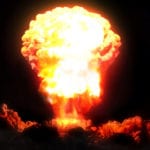 Mysteries
Mysteries  Mysteries
Mysteries  History
History 10 Surprising Stories About the Texas Rangers
 Humans
Humans 10 Philosophers Who Were Driven Mad by Their Own Theories
 Miscellaneous
Miscellaneous 10 Video-Game-Worthy Weapons and Armors from History
 Weird Stuff
Weird Stuff 10 Psychics Who Accurately Predicted Wartime Events
 The Arts
The Arts 10 Pieces of Art Inspired by a Broken Heart
 Health
Health 10 Science Fiction-Sounding New Medical Treatments
 History
History 10 Surprising Facts About the Father of Submarine Warfare
 Space
Space Ten Astonishing New Insights into Alien Worlds
 Weird Stuff
Weird Stuff 10 Bizarre Summer Solstice Rituals Still Practiced Today
 Mysteries
Mysteries Top 10 Haunting Facts About the Ghost Ship MV Alta
 History
History 10 Surprising Stories About the Texas Rangers
 Humans
Humans 10 Philosophers Who Were Driven Mad by Their Own Theories
Who's Behind Listverse?

Jamie Frater
Head Editor
Jamie founded Listverse due to an insatiable desire to share fascinating, obscure, and bizarre facts. He has been a guest speaker on numerous national radio and television stations and is a five time published author.
More About Us Miscellaneous
Miscellaneous 10 Video-Game-Worthy Weapons and Armors from History
 Weird Stuff
Weird Stuff 10 Psychics Who Accurately Predicted Wartime Events
 The Arts
The Arts 10 Pieces of Art Inspired by a Broken Heart
 Health
Health 10 Science Fiction-Sounding New Medical Treatments
 History
History 10 Surprising Facts About the Father of Submarine Warfare
 Space
Space Ten Astonishing New Insights into Alien Worlds
 Weird Stuff
Weird Stuff 10 Bizarre Summer Solstice Rituals Still Practiced Today
10 Times Popular Culture Actually Killed People
Books, films, and all manner of popular culture can amuse, inspire, and enlighten. But sometimes pop culture has…darker consequences. Countless acts of lethal violence have been inspired by art, ranging from suicide epidemics and copycat killings to radio station riots and outright global war.
See Also: 10 Pop Culture Icons With Cleverly Hidden Insults
10 Uncle Tom’s Cabin
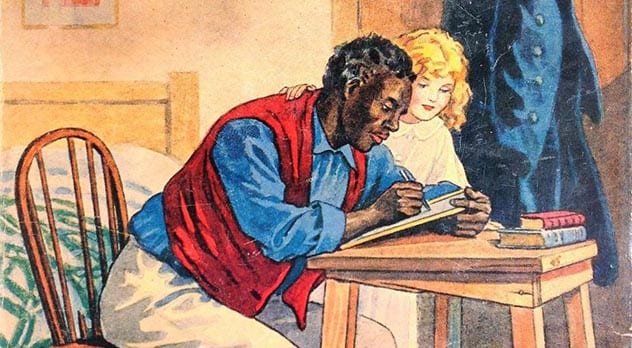 Uncle Tom’s Cabin is undeniably the most influential American novel ever written. The author, Harriet Beecher Stowe, came from a deeply religious abolitionist family. The book’s title character is a slave in Kentucky owned by the Shelby family. After the family falls into debt, Tom ends up in the possession of the vicious Simon Legree. When he refuses to tell the location of two runaways, his overseers beat him to death. The book was a best-seller in America and overseas, with dozens of translations produced. It even helped inspire the abolition of serfdom in Russia.
Uncle Tom’s Cabin is undeniably the most influential American novel ever written. The author, Harriet Beecher Stowe, came from a deeply religious abolitionist family. The book’s title character is a slave in Kentucky owned by the Shelby family. After the family falls into debt, Tom ends up in the possession of the vicious Simon Legree. When he refuses to tell the location of two runaways, his overseers beat him to death. The book was a best-seller in America and overseas, with dozens of translations produced. It even helped inspire the abolition of serfdom in Russia.
But in America it galvanized the anti-slavery and the pro-slavery factions. More northerners were converted to abolitionism. Southerners produced a voluminous “Anti-Tom” literature that romanticized slavery. Though many factors were at work, within 9 years of publication the Civil War had begun. When Stowe met President Lincoln, he supposedly called her “the little woman who wrote the book that started this great war.”[1]
9 The Clansman and Birth of a Nation
Decades later when Southerner Thomas Dixon saw a play based on Uncle Tom’s Cabin he was enraged. In response he wrote The Clansman, which depicted white Southerners as victims and the terrorist Ku Klux Klan as their courageous defenders in the turbulent post-Civil War period. The federal government had successfully suppressed the Klan and it seemed to be gone for good. But Dixon’s book was a success and inspired a film, Birth of a Nation, directed by D.W. Griffith. The movie was controversial from the beginning, even being banned in some cities.
Birth of a Nation’s deadly legacy was that it inspired a new incarnation of the Ku Klux Klan just months after release in 1915. After a cross-burning ceremony on Stone Mountain in Georgia the Klan was reborn. The original Klan had been secretive, calling itself “The Invisible Empire”. This new Klan used clever public relations to conceal their criminality. The organization went through many ups and downs and lingers on into the present day, murdering countless people along the way.[2]
8 Nazi Propaganda Films
Leni Riefenstahl was a successful German actress and director between the world wars. For this reason she was chosen to film a Nazi party rally in Nuremberg. The resultant “documentary” was Triumph of the Will. In aesthetic terms it was a masterpiece, in moral terms it was horrific. Later she directed a film glamorizing the 1936 Berlin Olympics, Olympia. The Nazis produced lesser known films as well, with other directors. They even commissioned a film about the sinking of the Titanic which blamed the tragedy on the greed of British businessmen.
The effect of this propaganda was to seduce the German public into supporting the regime. From the Nazi perspective it was a resounding success. In fact the most fanatical supporters of the regime, those who fought to the bitter end, were Germany’s young people. They had been raised on a diet of Nazi propaganda in print, radio, and film. And so they marched to their deaths, taking millions with them.
The video clip above is of the film “Olympia”. Of particular note is the Olympic salute performed from around the 16:00 mark. This salute is no longer used because it looks too much like the “Heil Hitler” salute, but it pre-dated Hitler by at least twenty years. It was discontinued from the Olympics from 1948.[3]
7 The Secret Agent
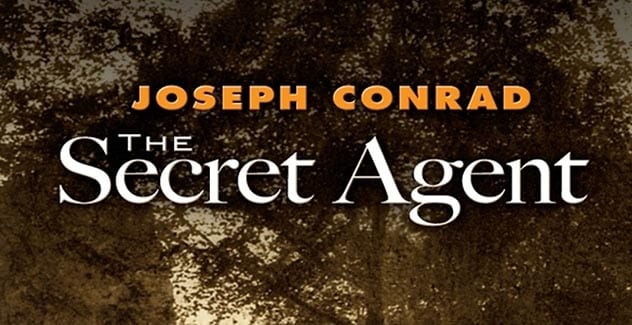
The Secret Agent is a political thriller of the Victorian era, written by the Polish-British author Joseph Conrad. Conrad, famous today for his colonial novella Heart of Darkness, was deeply interested in the evil side of human nature. The Secret Agent novel focuses on a group of Russian anarchists plotting terrorist attacks in Britain. Decades later this book would wind up in the hands of a young Polish-American, Theodore Kaczynski, better known as the Unabomer. Kaczynski was a brilliant but warped man and he deeply identified with one of the terrorist characters in the book, “The professor”.
He shared this character’s disdain for the mainstream of society, and willingness to use violence to change it. Kaczynski conducted a campaign of bombings targeting those associated with modern technology, which he despised. During this period he used Joseph Conrad’s name as an alias to evade capture. He ultimately killed three people and wounded over a dozen from 1975 to 1998. The fact that Conrad wrote the book to satirize terrorist violence was apparently lost on Kaczynski.[4]
6 The Sorrows of Young Werther
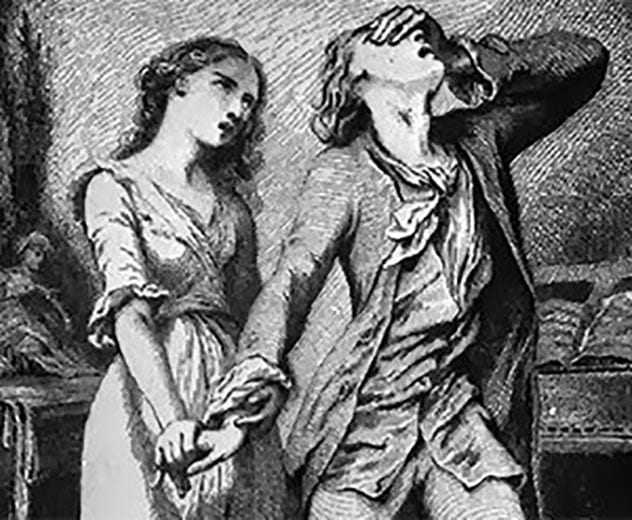
The Sorrows of Young Werther was the first novel of the great German writer Johann Wolfgang von Goethe. Published in 1774, the story is about a young man named Werther yearning for the love of his friend Charlotte. Werther is cultured, artistic man and they have a deep bond. But Charlotte eventually marries another man. He cannot handle the pain any longer and so he ends his own life.
The book was an instant bestseller across Europe. “Werther fever” spread across the continent with young men imitating the title character’s clothing. But more disturbing was that the novel helped triggered a wave of young people taking their own lives. Some used pistols identical to what Werther used in the novel and several bodies were found with copies. The term “Werther effect” today signifies media-inspired suicide.[5]
5 War of the Worlds
War of the Worlds is one of the classics of early science fiction, by British writer, H.G. Wells. It describes an invasion of earth by hostile Martians. These aliens nearly succeed in conquering the planet but are stopped by earthly bacteria to which they have no immunity. In 1938 the American Orson Welles adapted it into a radio drama, changing the setting from England to New Jersey.
The broadcast was so realistic it convinced many frightened listeners that the planet was actually being invaded. Some years later a Spanish version was broadcast in Quito, Ecuador. While the American audience was surely angered after learning the truth, in Quito the fiasco lead to rioting outside the radio station. A fire broke out and several people died, including the narrator’s girlfriend.[6]
4 A Clockwork Orange
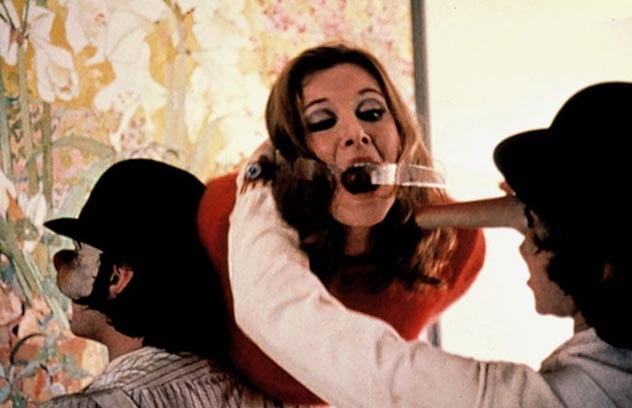
A Clockwork Orange began life as a novel by the British author Anthony Burgess. After spending years teaching in Britain’s Asian colonies, Burgess returned to the mother country in 1961. He found a changed society, the youth counterculture was emerging. A Clockwork Orange showed the dark side of this subculture, focusing on a bizarre gang of young criminals. They take narcotics, enjoy classical music, and commit grisly crimes. But in the end, they too become victims. Alex, the main character, is brainwashed into passivity through brutal psychological experiments.
After weak sales a film adaption by Stanley Kubrick gave the story mainstream exposure. Although Kubrick actually toned down some of the worst crimes in the novel, the movie version was still extremely controversial. A number of horrific crimes in Britain were linked to the film. Some of the connections were tenuous but in at least one case a young murderer explicitly claimed A Clockwork Orange was his inspiration. After getting death threats Kubrick pulled the film from circulation.[7]
3 Natural Born Killers
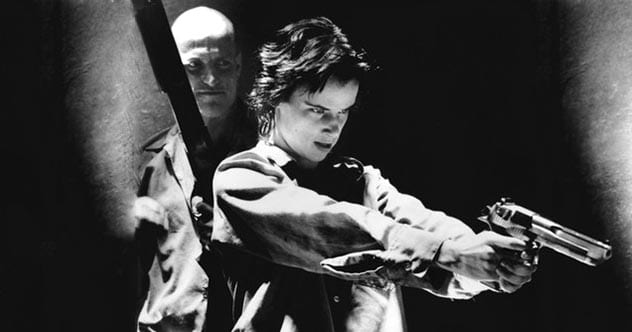
Natural Born Killers was a 1994 film directed by Oliver Stone. The movie stars Woody Harrelson and Juliette Lewis as a man and woman in love and on the run. They engage in a grisly multi-state killing spree as Robert Downey, Jr. plays the role of a low-life reporter who makes them famous. The film was controversial from the start for at least two reasons. One is the uninterrupted depiction of gratuitously gruesome violence.
The other reason was that it apparently played a role in inspiring multiple real life crimes. In one case a teen couple from Oklahoma murdered one businessman and paralyzed another. The previous night they had watched the film on loop while taking acid. A pair of French criminals killed three policeman and a cabbie. A poster from the film was found in their room. In one heartbreaking case a Texas boy said he decapitated his classmate to “be famous, like the natural born killers.”[8]
2 Taxi Driver
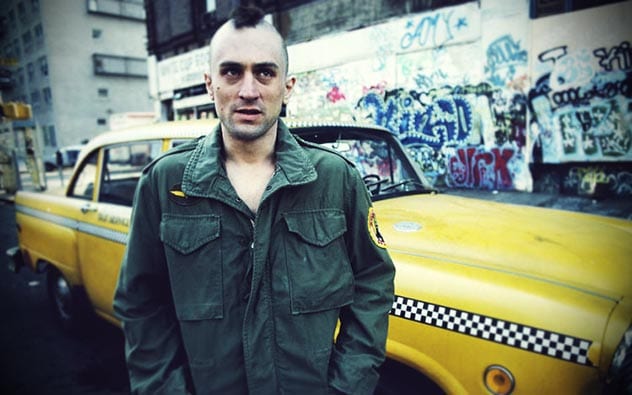
Taxi Driver is a 1976 film by Martin Scorsese. It focuses on a Vietnam veteran played by Robert De Niro. He’s depressed, can’t sleep, and as the title indicates, working as a cab driver in New York. The movie shows him slowly descending into madness as he plans acts of violence against both a pimp and a presidential candidate. One moviegoer named John Hinckley, Jr. became entranced by the film, especially the performance of De Niro’s very young female co-star, Jodie Foster.
Hinckley became obsessed with Foster, sending her letters, and eventually convincing himself that to assassinate the president would win her affection. In 1981, Hinckley fired six shots at President Ronald Reagan outside a hotel in Washington. Reagan narrowly survived and his press secretary, James Brady was left permanently paralyzed. 33 years later Brady’s death was ruled a homicide by the D.C. medical examiner, his death having been caused by the gunshot wounds he sustained.[9]
1 The Novels of Yukio Mishima

The strange life and stranger death of Yukio Mishima is a unique example of an author being seduced by his own artistic vision. Mishima grew up as a closeted gay man in Japan before and during the Second World War. He developed a deep sense of self-loathing due to his sexuality, his family’s abuse, and being declared unfit for service during the conflict. Mishima viewed post-war Japan as shallow, materialistic, and without culture. The central concern of his novels is Japan’s attempt to recover a lost identity.
He came to believe the solution to Japan’s identity crisis and his own was a return to the past. He devoted himself to the study of bushido, the warrior code of the long gone samurai. He gathered around himself a small group of like-minded followers. The day after finishing his last work, The Sea of Fertility, they entered Japan’s military headquarters in Tokyo. On the balcony he delivered a speech to the soldiers, calling for the end of Japan’s democratic constitution. He was met with ridicule. Mishima then went inside and stoically committed ritual suicide in the manner of the ancient samurai.[10]
For more lists like this, check out 10 Tragic Events That Created Iconic Pieces Of Pop Culture, and 10 Beloved Pop Culture Icons With Hateful Histories
?utm_source=promote_lv_lists&utm_medium=link&utm_campaign=direct
About The Author: I am a simple man on a continuous journey of self-education, hopefully helping others do the same. “It doesn’t matter how smart you are, unless you stop and think.”








